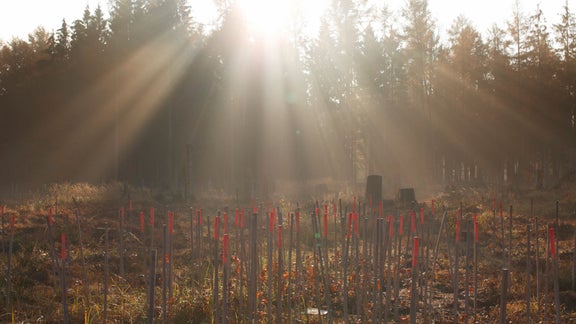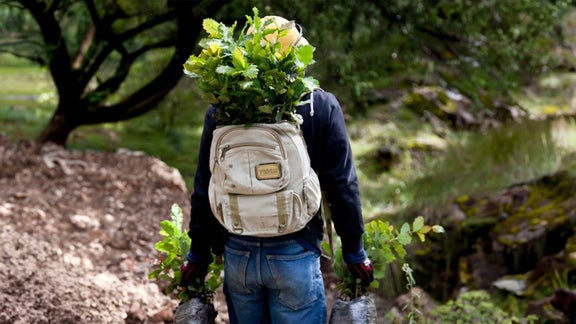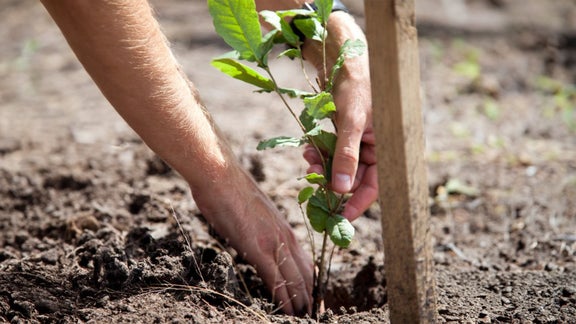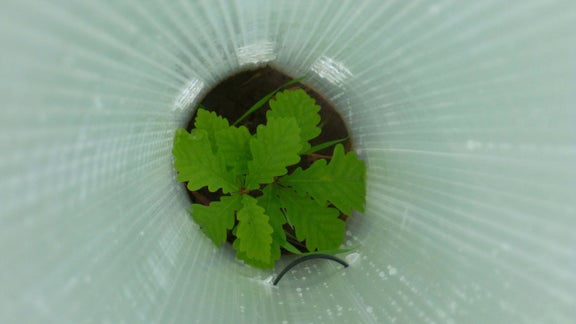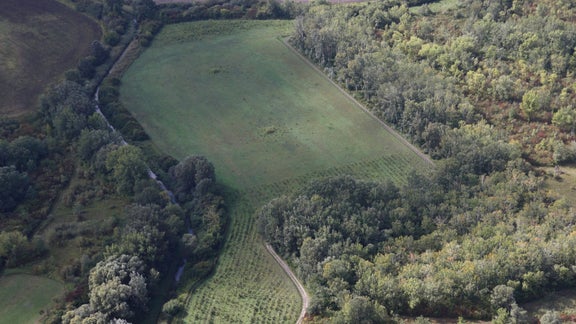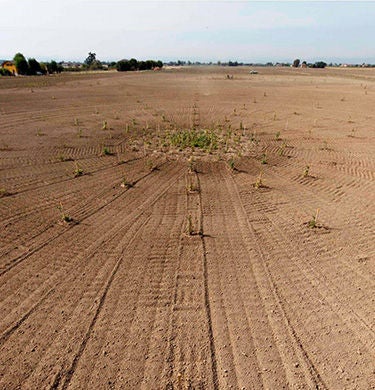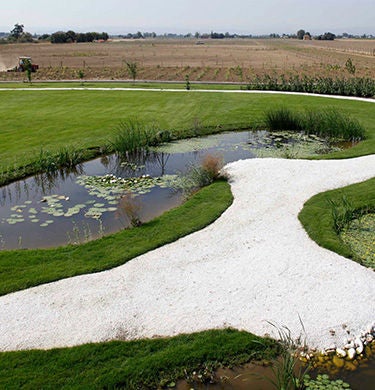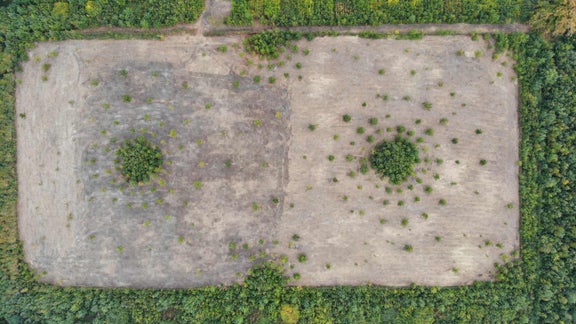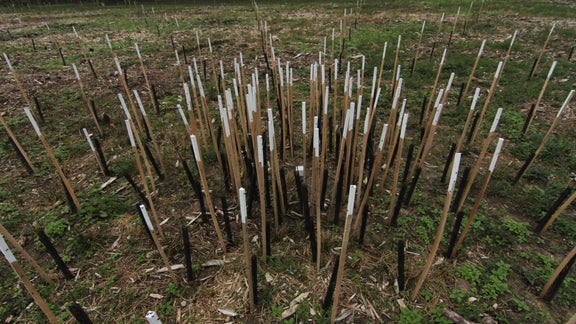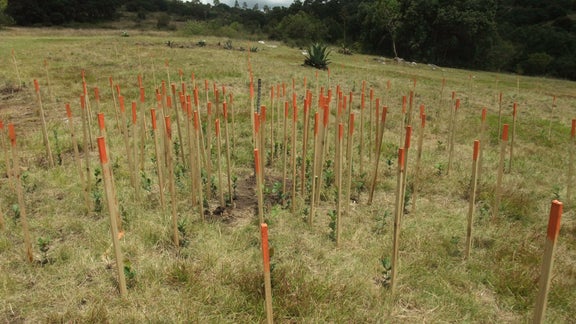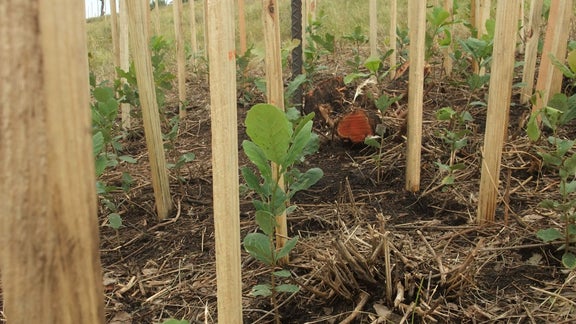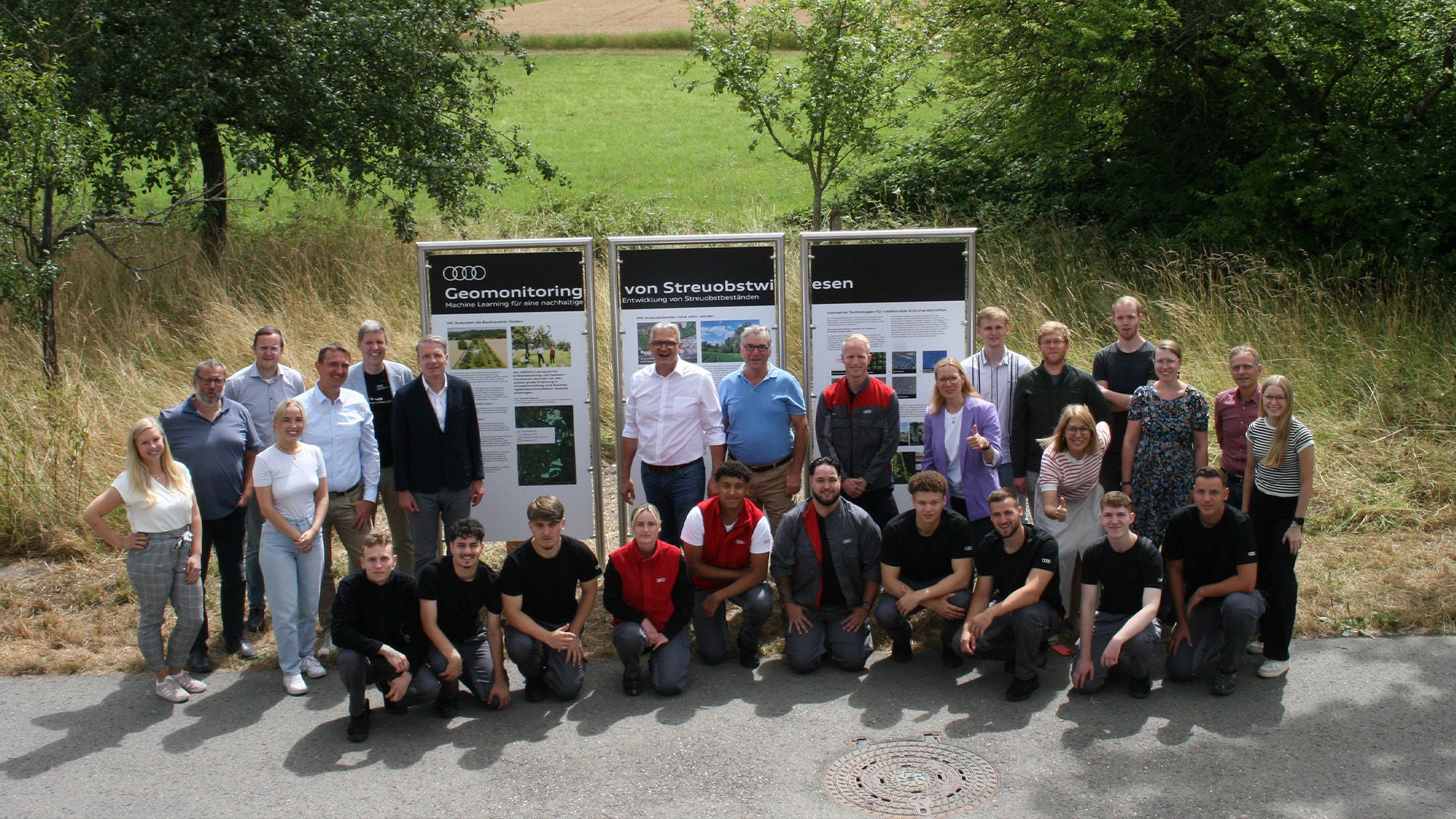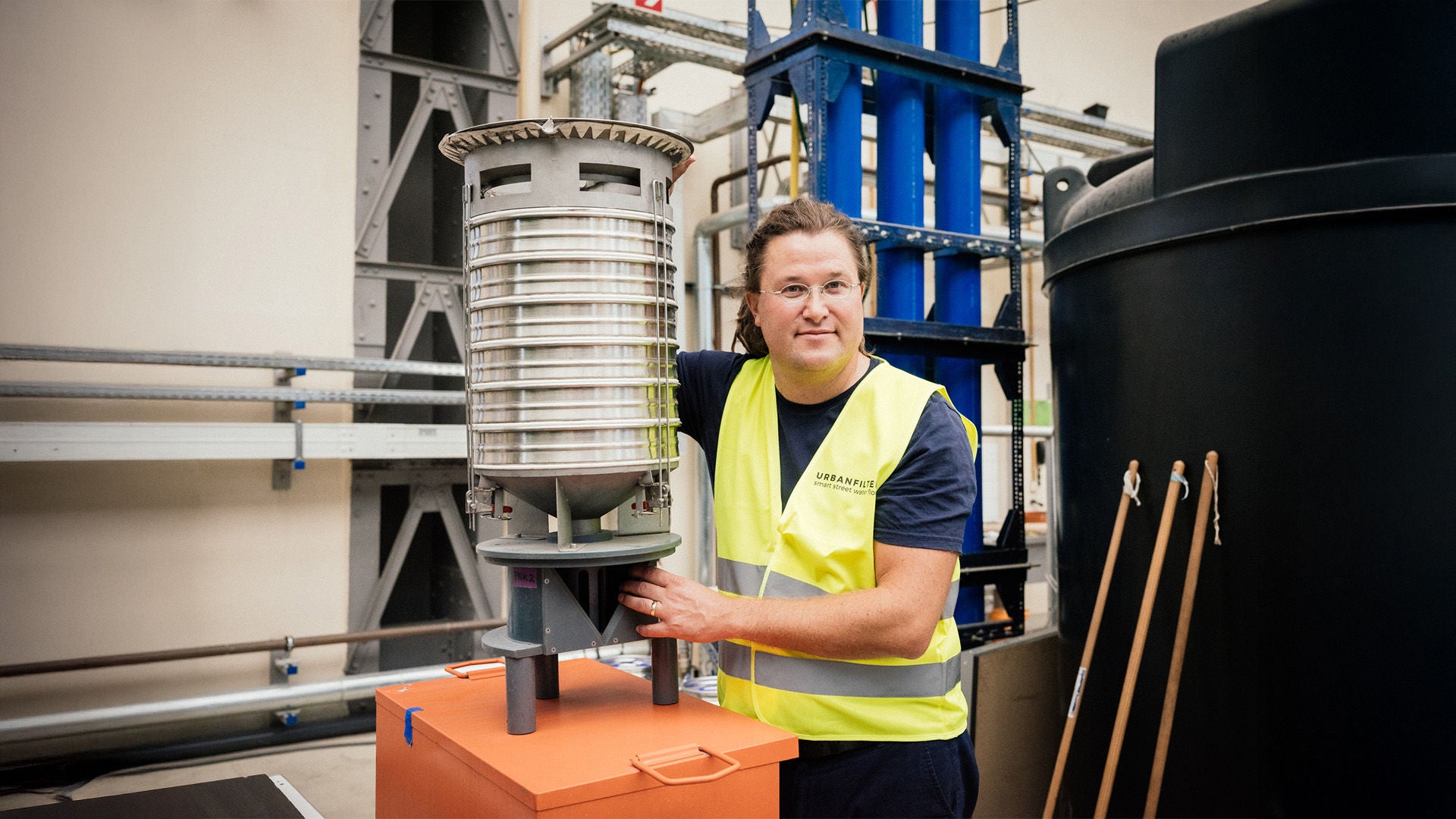Planting trees against climate change – Audi Foundation supports research of oak forest
12/01/2019 — Reading Time: 6 min
The international research project includes a study of the interactions between population density on the one hand and CO2 binding potential and biodiversity on the other.
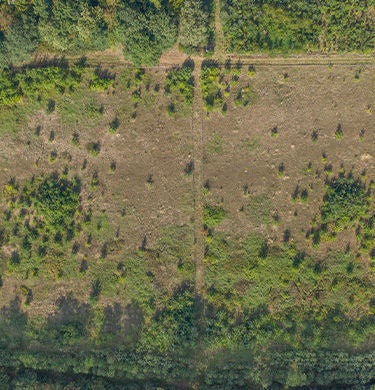
The oak: carbon storage and biodiversity donor
The aim is to find out which tree species are the best and how they should be planted, in order to achieve the maximum possible binding of carbon and the best conditions for a wide-ranging biological diversity. The oak is one of the most suitable tree species here, because it stores a great deal of carbon via photosynthesis when fully grown, and also supports biological diversity (biodiversity). In addition, oaks are especially resilient to the changing demands of the climate change.
Almost 100,000 pedunculate oaks planted near Audi factories since 2008
The basis of the project is the establishment of test areas according to a specific design under different climatic conditions. Here it is possible to make use of the commitment of the Audi group, which is planning the establishment of such forest areas at international sites. In the course of this, the trees are planted in concentric circles according to predetermined GPS co-ordinates, (experimental design according to Nelder). As long ago as 2008, the first test area was created in the Köschinger Forest near Ingolstadt in Germany, with the planting of about 36,000 English oak trees. In 2009, more than 13,000 pedunculate oaks were planted in a second area near the Hungarian site in Győr.
International expansion of the oak forest research project planned
An international expansion of the project is at the planning stage under the title “Diversity and Productivity of Forests. Comparison between Monocultures and Mixed Forest in Different Climate Zones”: In forests in different temperature zones, ranging from Atlantic to continental and right up to tropical climates, it will be analyzed how different forms of forest structure can contribute to climate protection through carbon storage as well as oxygen production and how productivity and species diversity can be optimally harmonized in sustainable forest management. All test areas are designed according to the Nelder design and therefore allow the space-saving study of different population densities.
Test design according to Nelder
More details
The layout of the test areas, which is based on the so-called Nelder circle design, makes it possible to obtain data for a wide range of factors in an oak forest at different growth densities in an ideal way.
In the process, the English oak trees are planted according to a specific method in concentric circles according to predetermined GPS co-ordinates.
The project is particularly suitable for analyzing the climate-relevant carbon storage of forests and the consequences for the biodiversity of different forms of plant cover.
The growth-related use of Nelder circles is unique to Central Europe.
Test design according to Nelder
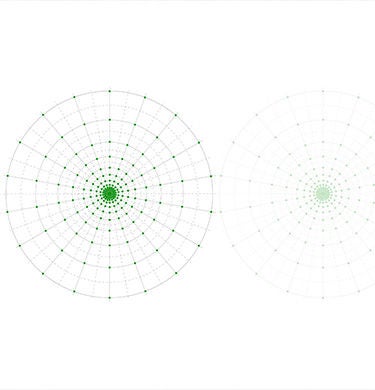
Kösching Forest (Germany)
More details
36,000 oaks have been planted. En masse, they form an experimental investigation that is unique in Germany. In collaboration with the Bayerischen Staatsforsten (Bavarian State Forest Commission) and the Lehrstuhl für Waldwachstumskunde (Chair of Forest Growth and Yield Science) at the Technical University of Munich, Audi has created the research project “CO2-Speicher Eichenwald” (Oak Forest CO2 Storage).
The area
A forested area in Kösching Forest to the east of Ingolstadt was selected as the location of the first test area. This area was extensively damaged by bark beetles, drought and, in early 2007, by Hurricane Cyril. Besides the provision of the area for the Oak Forest Research Project, the aim of the Audi-supported project is the replacement of former spruce populations by a stable ecologically high-quality deciduous forest, which can withstand the changed demands of the future climate. This was done by planting approximately six hectares with 36,000 English oak saplings - partly in the form of Nelder circles.
The oak is one of the most suitable tree species here, in particular, because it features a high carbon storage capacity and biodiversity - species diversity. The oak creates a versatile habitat for a wide variety of animal and plant species.
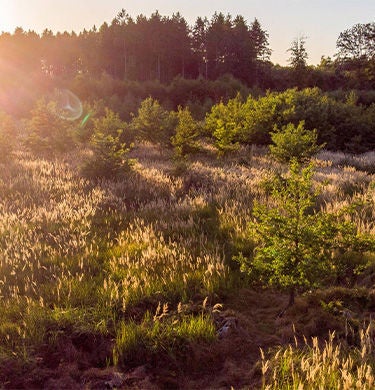
The project partners
- Technical University of Munich, Bayerischen Staatsforsten (Bavarian State Forest Commission)
Danube meadows (Hungary)
More details
The area
The second test area for the overall project was established in November 2009 with the planting of more than 13,000 oak saplings. A non-agricultural meadow area in a River Danube floodplain, located 15 km to the north of Győr, near the border with Slovakia, was selected as the location. The area of about four hectares is provided by the state forest company and has been taken out of use.
The costs incurred in the creation of the test area were met by AUDI AG and Audi Hungary. The new forested area will be available for the project for 100 years and is maintained by the regional forestry authority.
The test area at Győr is part of the network of areas for investigating the productivity and biodiversity of oak forests that are laid out along a climate gradient. In the Győr area, the oak, which stores a great deal of carbon when fully grown and provides biodiversity and therefore biological diversity, is also one of the most suitable tree species.
The project partners
- Technical University of Munich
- University of West Hungary, Sopron (Nyugat-Magyarországi Egyetem)
- Hungarian State Forestry (Kisalföldi Erdőgazdaság Zrt.)
- Regional Forestry Authority
Beilstein Municipal Forest (Germany)
More details
The area
The third test area for the overall project was established in November 2010 with the planting of more than 10,000 English oak saplings. The research area is situated in a forested area near the town of Beilstein, which is to the southeast of Neckarsulm. The area, which was previously used for agriculture, is completely surrounded by mixed forest and is part of what is known as the Beilstein Municipal Forest, one of the largest municipal forests in Baden-Württemberg and the heart of the city for Beilstein citizens. About five of the seven hectares acreage provided by the town of Beilstein, have been reforested. The rest of the area will be developed for rough pasture in the long term. The costs incurred in the creation of the test area were met by AUDI AG.
The project partners
- Technical University of Munich
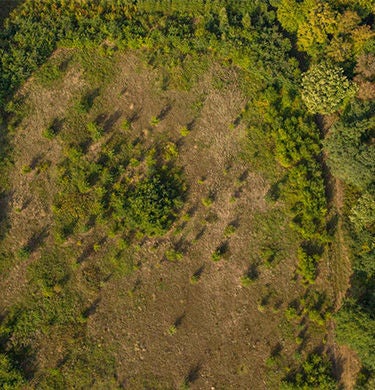
Tarjánpuszta (Hungary)
Mehr Details
The area
The now fourth test area for the overall project was established in April 2011 with the planting of more than 16,000 oak saplings.
An area in the hilly landscape of Tarjánpuszta, 25 kilometers from Győr, was selected as the location for the second Hungarian test area. The site has an area of approximately four hectares. The costs incurred in the creation of the test area were met by AUDI AG and Audi Hungary. The new forested area will be available for the project for 100 years and is maintained by the regional forestry authority.
The test area at Győr is part of the network of areas used for investigating the productivity and biodiversity of oak forests that are laid out along a climate gradient. In the Győr area, the oak, which stores a great deal of carbon when fully grown and provides biodiversity and therefore biological diversity, is also one of the most suitable tree species.

The project partners
- Technical University of Munich
- University of West Hungary, Sopron (Nyugat-Magyarországi Egyetem)
- Hungarian State Forestry (Kisalföldi Erdőgazdaság Zrt.)
- Regional Forestry Authority
Sant`Agata Bolognese (Italy)
Mehr Details
The area
This now fifth test area for the overall project was established at the start of 2011 with the planting of 10,000 oak saplings.
A formerly agricultural area was selected as the location for the Italian test area. The implementation of parallel projects in collaboration with the community and the university is also planned. A gym and a nature trail, intended mainly for schools, with native tree species and a humid biotope were integrated into the emerging forest area, in order to introduce children and teenagers to their environment. The resulting park has an area of about seven hectares.
The costs incurred in the creation of the test area were met by Lamborghini as a 100% subsidiary of AUDI AG. The area will be available for the project for 70 years and is maintained by the municipal administration together with the universities.
The project partners
- Technical University of Munich
La Hulpe Park test area (Belgium)
More details
The area
The sixth test area for the overall project was established at the start of 2012 with the planting of 10,000 oak saplings.
The Forêt de Soignes (Sonian Forest) research location is situated in La Hulpe Park. The test area covers approximately four and a half hectares in total. The costs incurred in the creation of the test area were met by the Audi Brussels site. The area is provided by Wallonia and is maintained by the Department for Nature and Forests (Departement de la Nature et des Forets) together with the universities.
The test area in La Hulpe Park near Brussels is part of the network of areas set up for investigating the productivity and biodiversity of oak forests that are laid out along a climate gradient. In the Brussels area, the oak, which stores a great deal of carbon when fully grown and provides biodiversity and therefore biological diversity, is also one of the most suitable tree species.
The project partners
- Technical University of Munich
- Department for Nature and Forests
- Wallonia
Parque Flor del Bosque (Mexico)
More details
The area
In the autumn of 2014, employees of the Chair of Forest Growth and Yield Science at the Technical University of Munich and employees of the local forestry administration created another Nelder test area in a forest area (Flor del Bosque Park) to the south of the city of Puebla in Mexico. This area comprises two Nelder wheels and smaller circle segments. The plants in the Nelder wheels were arranged in the same planting system that was already used on the existing areas.
The local tree species Quercus rugosa NEE. (netleaf oak) was used as the tree species. The test area represents a useful extension of the location gradient, which has been covered so far by the areas in Europe.
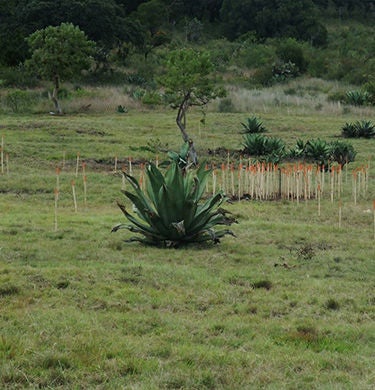
The project partners
-
Technical University of Munich
